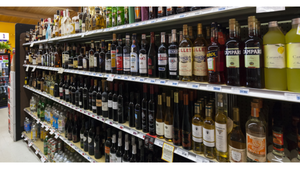From far, far away
January 1, 2018
Produce imports continue to grow, providing retailers with colorful, fresh product to expand their departments. There was a time, long ago, when the fruits and vegetables of the season dictated consumers' diets. Retailers would stock the season's harvest: Root vegetables in the winter perfect for soups and stews, all the fixins' for salads in the summer. Boy how times have changed. Now consumers do not have to wait until summer for fresh berries and melons. They can even get exotic fruit such as kiwi or papaya year-round with the advanced ability retailers have to import fresh produce. "Retailers are discovering they can have a berry patch year-round-a very profitable area of the store-and be confident they are going to have the fruit to support it," says Tom Tjerandsen, managing director-North America, Chilean Fresh Fruit Association, the marketing arm for Chilean fruit imports, based in Sonoma, Calif. As more and more retailers accommodate consumer demand for fruit "whenever and wherever they want it," imports are continuing to grow at a fast pace. For example, the Argentinean Blueberry Committee (ABC) reports that the U.S. is the largest importer of Argentinean blueberries, receiving approximately 65% of the country's total export, a volume that has tripled over the past five years. Despite the growing popularity, retailers still need to feature traditionally out-of-season fruits in order to boost impulse purchases. "I think part of retailer's challenge is to condition the shopper to recognize that a particular fruit will be available whenever they want it," says Tjerandsen. "Retailers should put them in their planogram, make sure its filled 12 months of the year and give it sufficient visibility. Shoppers don't write pomegranates from Chile on their shopping lists. They are high impulse items and need to have significant presence in the produce section to draw the consumer's attention to the area." Julia Inestroza, marketing director at Gourmet Trading Co. (GTC), agrees that retailers have to promote imported produce in a special way. The Los Angeles-based company imports blueberries and asparagus with more than 75% of its product coming from abroad-Peru and Mexico for asparagus and Argentina, Chile, Mexico and Canada for blueberries. "For the asparagus import season we have 1-, 1.5- and 2-pound bags that contain green, white and purple asparagus. It's something special we have just from Peru," says Inestroza. "It really makes things stand out and is a special vegetable for those holiday meals." Industry observers say promoting produce's unique characteristics is a surefire way to capture impulse shoppers, especially with fruit that is not grown domestically otherwise it may be taken for granted by consumers. "In general retailers need to stay engaged and active in communicating and reminding their consumers of the benefits of their offerings," says Bil Goldfield, communications manager for Westlake Village, Calif.-based Dole Fresh Fruit. "For bananas, retailers can emphasize the value provided in the form of taste, nutrition and portability, combined with their year-round availability. Or retailers can help consumers capture a bit of the warm glow of summer when temperatures begin to drop in the U.S. by featuring imported stone fruit and grapes when their season kicks off." Staying Fresh Advancements in technology and transportation have not only made it possible to quickly transport produce from South America, but also maintain freshness and extend shelf life, giving consumers more time to peruse, purchase, store and enjoy their fruit. Blueberries for example, have a short shelf life. According to the ABC, based in Buenos Aires, approximately 80% of Argentinean blueberries are transported by air, guaranteeing a minimal transit time from field to fork. "Depending on destination, air-freighted blueberries may be on supermarket shelves within one to two days," says Inés Peláez, manager for ABC. With the quality of imported produce on par with that of domestically grown, some growers are capitalizing on the region's reputation by calling out the country of origin on packaging. For example, Oso Sweet has different logos and signage for its Chilean onions. "People know us for our Chilean onions so we kept our Andean Mountain theme featuring wood crates from December to March. For the other seasons we roll out a different look-a home-grown farm fresh design," says Brian Kastick, president for the Charleston, W. Va.-based company. "The Chilean program is the roots of our company and the produce is priced different." The sweet onion category has always been a major player in importation with Chile, Peru and Mexico being the biggest growing locations outside of Vidalia, Ga. And it is still growing, says Richard Pazderski, director of sales for Bland Farms based in Glennville, Ga. "We started importing from Peru 12 years ago with 50 containers. This year we will do around 1,200. It grows every year. We consider a 10% growth each year to be a good pattern for us." Maintaining that growth across the industry is about keeping up appearances. Consumer research has shown that when shopping for sweet onions, customers prioritize quality and flavor, rather than country of origin. Consumers look for the flat, Granex shape and bright yellow skin, says John Shuman, president and director of sales for Shuman Produce. Shuman Produce offers Vidalia-type, Granex sweet onions 52 weeks a year. "This is very important in defining the sweet onion category to the consumer," says Shuman. The Reidsville, Ga.-based company's also maintains consistency in its packaging. A recent redesign to its fall packaging was created to "provide all the same benefits of the spring line, including a consistent brand image all year long," he adds. Battling "buy local" Barry Rogers, president of the Melbourne, Fla.-based Sweet Onion Trading Co. (SOTC), agrees with Shuman's approach. "I don't believe origin is what helps a retailer grow a business," he says. "High quality, well-finished onions, or produce for that matter, is what sells." In some regions imports are up against a "buy local" trend. Consumers want to give back to their communities, say observers, and local farms are popping up everywhere, in some cases, even on supermarket rooftops. Growers and distributors of imported produce, however, say despite the "buy local" trend there will always be a need to import produce. Imports are necessary to complement the seasons, they say, noting that during certain times of the year, and for certain types of produce, it is the only option. For particular produce items, year-round availability has caused sales to increase overall. Observers say that when on the shelf 52 weeks a year, consumers often find new ways to incorporate that produce item into their diet, transforming it into a mainstay. David Fausset, sales manager for Mission Produce, grower and importer of asparagus and avocados, says that this is what is being seen happen in the avocado category. "The value of the commodity has gone up over the last 10 years as more fruit is imported with different seasonalities," he says. "If we tried to stretch the California season we would be distributing less mature fruit at the beginning and holding it at the end until the next cycle began. Certain retailers wouldn't have any avocadoes and consumers would forget about them." The Oxnard, Calif.-based grower does, however, balance its domestically grown and imported avocados to tap into the 'buy local' trend. The company is working with one major retailer to keep the California-grown produce on the west coast and distribute the Peruvian imports to other regions.
About the Author
You May Also Like




